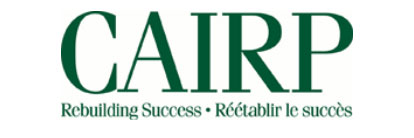BANKRUPTCY
What is bankruptcy and what are the benefits to the debtor?
Bankruptcy is a legal process, regulated by the Act, by which you may be discharged from most of your debts. The purpose of the Act is to permit an honest, but unfortunate, debtor to obtain a discharge from his or her debts, subject to reasonable conditions.
When you declare bankruptcy, your assets are given to a trustee in bankruptcy who then sells them and distributes the money among your creditors. Once you declare bankruptcy, your unsecured creditors will not be able to take legal steps to recover their debts from you (such as seizing assets or garnisheeing wages).
It is also possible to file a "joint assignment." A joint assignment allows two bankrupts, involved in a close financial relationship, to file for bankruptcy together and to see their assets combined and their files dealt with as one file. This is available to debtors if their debts are substantially the same and the trustee believes it is in the best interest of the debtors and creditors.
What are the duties of a bankrupt?
Once you are legally a bankrupt, you are required to perform the duties of bankrupts as outlined in Appendix I.. The trustee will inform you of these duties.
How does one declare bankruptcy?
First, you meet with a trustee in bankruptcy who will assess your financial situation and explain the options available to you as described earlier. If you decide to declare bankruptcy, the trustee will help you complete several forms that you will have to sign. You are considered a bankrupt only when the trustee files these forms with the Official Receiver.
What kind of forms will I have to sign?
You will have to sign at least two forms. One is an "Assignment" and the other is your "Statement of Affairs." In the assignment you state that you are handing over all of your assets to the trustee for the benefit of your creditors. In the statement of affairs you list your assets, liabilities, income and expenses. As well, you will have to answer several questions about your family, your employment and the disposition of your assets.
Before you sign the forms, make sure you understand these legal documents that become part of your bankruptcy file. Although the trustee prepares them from the information you provide, they are your statements. You are responsible for the accuracy of their contents. Review them carefully before you sign. Once these documents have been filed with and accepted by the Official Receiver, you become legally bankrupt and, at this point, the process cannot be reversed without a court order. Keep copies of notices and all other documents the trustee sends you.
What happens after the forms are filed with and accepted by the Official
Receiver and I become bankrupt?
Generally, a meeting of creditors is not necessary but there may be instances where such a meeting will be held. Creditors or the Official Receiver may request one. If a meeting of creditors is called, you must attend this meeting. You may also be required to go to the Official Receiver's office to answer several questions under oath about your financial affairs.
What happens at the first meeting of creditors?
If a meeting is called, the trustee will give a report about your assets and liabilities and the creditors may ask you questions related to your financial file. The creditors will then vote to either confirm the trustee's appointment, or substitute a trustee of their choice. The creditors will then have an opportunity to vote for the appointment of inspectors. They may also give directions to the trustee related to the administration of the estate.
What does the examination with the Official Receiver involve?
The Official Receiver may send you a notice instructing you to appear before him or her for an examination under oath. The Official Receiver will then ask you a number of questions about the causes of your bankruptcy, your conduct, the disposition of your assets and the nature of your debts.
When is a bankrupt discharged?
If you are a first-time bankrupt, you will be automatic-ally discharged nine months after the date of bankruptcy if you have no surplus income. You will be automatically discharged after 21 months after the date of bankruptcy if you are required to make surplus income payments to the estate.
For a second bankruptcy, you will automatically be discharged after 24 months after the date of bankruptcy if you have no surplus income and 36 months after the date of bankruptcy if you are required to make surplus income payments to the estate.
Bankrupts with personal income tax debt in an amount of $200 000 or more representing 75 percent or more of total unsecured claims, are not eligible for an automatic discharge.
An automatic discharge happens only if notice of opposition to the discharge is not given by the Superintendent of Bankruptcy, the trustee or a creditor.
If notice of opposition to the discharge is given and it is based on the fact that the bankrupt did not pay the required amount of surplus income, or the bankrupt, who could have made a viable proposal, has chosen bankruptcy rather than a proposal as a solution to debt, the trustee must ask the Official Receiver for mediation.
If mediation fails to resolve the issue or if an opposition is filed for other reasons, the trustee will have to obtain a date for a court hearing. The parties opposing the discharge will have to give their reasons to the court, which will make a decision. It should be noted that a first-time individual bankrupt who refuses or neglects to receive the required counselling sessions will not qualify for an automatic discharge.
What kind of discharge orders can a judge or registrar issue?
At a hearing for a discharge, the court decides whether to postpone the hearing to a later date, refuse the discharge or issue any of the following orders:
Order of Absolute Discharge
This official document relieves you of the debts incurred before you declared bankruptcy, taking into consideration the exceptions provided in the Act.
Order of Conditional Discharge
The court may impose certain conditions that must be met before your discharge becomes absolute. For example, the court may require you to pay an amount to your trustee for distribution to your creditors.
Order of Suspended Discharge
The court orders a delay so that the discharge will not be effective until a certain date.
Your discharge may be delayed by an opposition by a creditor, the trustee or the Superintendent of Bankruptcy on such grounds as an ongoing criminal investigation or a breach of your duties as specified in the Bankruptcy and Insolvency Act.
What is the effect of a bankruptcy discharge?
The bankrupt is released of most debts. Some debts are not released, however, such as an award for damages in respect of an assault; a claim for alimony, spousal or child support; any court fine; a debt arising out of fraud or misleading representation; or debts or obligations for student loans if the bankruptcy occurs while the debtor was still a student or within seven years after the bankrupt ceased to be a student.
How does bankruptcy affect employment?
For the most part, bankruptcy should not affect your employment. However, there are some special cases. For example, you may have difficulty being bonded. Your trustee will be able to give you more information on other possible restrictions or prohibitions.
Does it cost anything to go bankrupt?
Yes. There is a filing fee to be paid to the Superintendent of Bankruptcy. In addition, the trustee is entitled to be paid. These fees are prescribed by the Bankruptcy and Insolvency Rules.
Source : Strategis.ic.gc.ca


